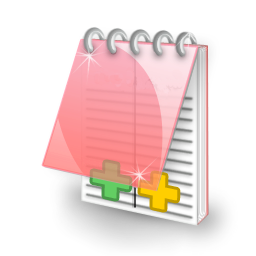Choose Golang for high performance and concurrency, ideal for backend services and network programming; select Python for rapid development, data science, and machine learning due to its versatility and extensive libraries.

In the ever-evolving world of programming, choosing the right language for your project can be as crucial as the project itself. When it comes to Golang and Python, two languages that have captured the hearts of developers worldwide, the decision often boils down to their applications and use cases. So, which one should you pick? Let's dive into the world of Golang and Python to explore their strengths, weaknesses, and the scenarios where they shine the most.
Golang and Python: A Tale of Two Languages
When I first started exploring Golang, I was struck by its simplicity and efficiency. Golang, or Go, was created by Google to address the challenges of building large-scale software systems. Its design philosophy emphasizes simplicity, concurrency, and performance. On the other hand, Python, my go-to language for quick prototyping and data analysis, is renowned for its readability and versatility. Both languages have their unique charms, but their applications and use cases differ significantly.
Golang: The Concurrency Champion
Golang's true power lies in its ability to handle concurrent operations with ease. If you've ever struggled with threading in other languages, Golang's goroutines and channels will feel like a breath of fresh air. I remember working on a project that required processing thousands of network requests simultaneously. Golang made it possible to write clean, efficient code that scaled effortlessly.
package main
import (
"fmt"
"time"
)
func say(s string) {
for i := 0; i < 5; i {
time.Sleep(100 * time.Millisecond)
fmt.Println(s)
}
}
func main() {
go say("world")
say("hello")
}This simple example demonstrates how easy it is to run concurrent operations in Golang. The go keyword launches a goroutine, allowing the say("world") function to run in parallel with say("hello"). This is particularly useful for applications like web servers, where handling multiple requests concurrently is crucial.
Golang's applications shine in areas such as:
- Backend Services: Golang's performance and scalability make it an excellent choice for building backend services. Companies like Uber and Dropbox have adopted Golang for their backend infrastructure.
- Network Programming: With its built-in support for concurrency and efficient I/O operations, Golang excels in network programming, making it ideal for building microservices and distributed systems.
- DevOps Tools: Tools like Docker and Kubernetes are written in Golang, highlighting its suitability for building reliable and efficient DevOps tools.
However, Golang is not without its challenges. Its static typing and lack of generics can sometimes make it less flexible than Python. Additionally, while Golang's standard library is comprehensive, it may not be as extensive as Python's ecosystem of libraries and frameworks.
Python: The Versatile Workhorse
Python, on the other hand, is like a Swiss Army knife in the programming world. Its versatility and ease of use make it an excellent choice for a wide range of applications. I've used Python for everything from web development to machine learning, and its readability has always been a major plus.
def fibonacci(n):
if n <= 1:
return n
return fibonacci(n-1) fibonacci(n-2)
print(fibonacci(10))This simple Fibonacci function demonstrates Python's readability and ease of use. Python's syntax allows you to express complex ideas in a concise and readable manner, making it ideal for rapid development and prototyping.
Python's applications are vast and varied, including:
- Data Science and Machine Learning: Python's libraries like NumPy, Pandas, and scikit-learn make it the go-to language for data science and machine learning. Its ability to handle large datasets and perform complex calculations efficiently is unmatched.
- Web Development: Frameworks like Django and Flask make Python a popular choice for web development. Its simplicity and readability make it easy to build and maintain web applications.
- Automation and Scripting: Python's ease of use and extensive standard library make it perfect for automation tasks and scripting. From automating repetitive tasks to building complex workflows, Python excels in this area.
However, Python's performance can be a bottleneck in certain scenarios. Its dynamic typing and interpreted nature can lead to slower execution times compared to compiled languages like Golang. Additionally, while Python's ecosystem is vast, it can sometimes be overwhelming to navigate through the plethora of libraries and frameworks available.
Choosing Between Golang and Python
So, how do you choose between Golang and Python for your next project? It ultimately depends on your specific needs and the nature of your application. Here are some considerations to keep in mind:
- Performance and Concurrency: If your project requires high performance and efficient handling of concurrent operations, Golang is the way to go. Its ability to scale and handle multiple requests simultaneously makes it ideal for backend services and network programming.
- Rapid Development and Prototyping: If you need to quickly prototype an idea or build a proof of concept, Python's readability and ease of use make it the perfect choice. Its versatility and extensive ecosystem of libraries make it suitable for a wide range of applications.
- Data Science and Machine Learning: For data-intensive applications and machine learning projects, Python's libraries and frameworks are unparalleled. Its ability to handle large datasets and perform complex calculations efficiently is a significant advantage.
- Web Development: Both Golang and Python are capable of building web applications, but your choice may depend on the specific requirements of your project. Golang's performance and scalability make it suitable for high-traffic websites, while Python's ease of use and extensive libraries make it ideal for rapid development.
In my experience, the best approach is often to use both languages in tandem. For instance, I've used Golang to build the backend services of an application while using Python for the data processing and machine learning components. This hybrid approach allows you to leverage the strengths of both languages and build a more robust and efficient system.
Conclusion
In the battle between Golang and Python, there is no clear winner. Both languages have their unique strengths and are suited for different applications and use cases. Golang excels in performance and concurrency, making it ideal for backend services and network programming. Python, on the other hand, shines in its versatility and ease of use, making it perfect for rapid development, data science, and machine learning.
As a developer, the key is to understand the strengths and weaknesses of each language and choose the right tool for the job. Whether you're building a high-performance backend service or a data-intensive machine learning model, Golang and Python both have a place in your toolkit. So, embrace the diversity of the programming world, and let the applications and use cases guide your choice.
The above is the detailed content of Golang vs. Python: Applications and Use Cases. For more information, please follow other related articles on the PHP Chinese website!
 Go language: efficiently implement truncated conversion from floating point numbers to integersAug 17, 2025 am 11:33 AM
Go language: efficiently implement truncated conversion from floating point numbers to integersAug 17, 2025 am 11:33 AMThis article discusses the truncation behavior when converting floating point numbers (such as float32) to integers (int) in Go. In response to the confusion developers may encounter when avoiding rounding and only retaining integer parts, this article will reveal the simple and efficient mechanism of built-in type conversion in Go, demonstrating how to directly implement truncated conversion of floating-point numbers without using string operations, ensuring that the results are in line with expectations, and improving code performance and readability.
 In-depth analysis of Go language pack import mechanism: staticity and runtime loading limitationsAug 17, 2025 am 11:27 AM
In-depth analysis of Go language pack import mechanism: staticity and runtime loading limitationsAug 17, 2025 am 11:27 AMThe package import mechanism of Go language is static and does not support dynamic import of packages at runtime through string paths, nor can new packages be loaded when the program is running. This design is designed to improve compiler performance, code readability, and support powerful static analysis tools. Developers need to clarify all dependencies at compile time to ensure the stability and maintainability of the program.
 Go language: implement truncation of floating-point numbers to integers instead of roundingAug 17, 2025 am 11:15 AM
Go language: implement truncation of floating-point numbers to integers instead of roundingAug 17, 2025 am 11:15 AMThis article explores in-depth how to implement truncation (rounding) instead of rounding when converting floating-point numbers into integers in Go. By comparing common misunderstandings, such as the use of string conversion may lead to rounding behavior, the article clearly points out that the built-in type conversion int (floatValue) in Go is the most direct, efficient and expected recommended method to achieve floating-point number truncation. The tutorial provides sample code and emphasizes that the method does not require the introduction of string operations, ensuring the accuracy and performance of the conversion.
 Solve the problem that the template package cannot be found on the App Engine Go development serverAug 17, 2025 am 11:09 AM
Solve the problem that the template package cannot be found on the App Engine Go development serverAug 17, 2025 am 11:09 AMThis document is intended to help developers solve the problem that the "template" package cannot be found when using App Engine Go development servers. By updating the template initialization method and adjusting the template parameters, compatibility issues caused by SDK version updates can be solved to ensure that the application can run normally.
 Go language rand package ExpFloat64() function undefined error solutionAug 17, 2025 am 11:06 AM
Go language rand package ExpFloat64() function undefined error solutionAug 17, 2025 am 11:06 AMThis article aims to resolve the "undefined: ExpFloat64" error encountered when using the ExpFloat64() function of the rand package in Go. By analyzing the causes of errors, providing correct code examples can help developers avoid similar problems and better understand the package reference and usage specifications of Go language.
 How to handle graceful shutdowns in a Go web serverAug 17, 2025 am 11:00 AM
How to handle graceful shutdowns in a Go web serverAug 17, 2025 am 11:00 AMToimplementgracefulshutdowninaGowebserver,listenforSIGINTorSIGTERMusingsignal.Notify,runtheserverinagoroutine,andcallserver.Shutdownwithatimeoutwhenasignalisreceived,allowingongoingrequeststocompletewhilerejectingnewones,ensuringcleanterminationwitho
 How to handle panics and recovery in GoAug 17, 2025 am 10:51 AM
How to handle panics and recovery in GoAug 17, 2025 am 10:51 AMUsepanicforexceptionalsituationslikemissingconfigurationsorlogicerrors,notroutineerrorhandling.2.Userecoverindeferredfunctionstoregaincontrolofapanickinggoroutine,particularlyinserversormiddlewaretoisolatefailures.3.Alwayslogpanicdetailswithstacktrac
 Possibility and impact of optional garbage collection mechanism in GoAug 17, 2025 am 10:51 AM
Possibility and impact of optional garbage collection mechanism in GoAug 17, 2025 am 10:51 AMThis article explores the possibility of implementing an optional garbage collection mechanism (GC) in Go language and analyzes its impact on language characteristics and performance. Many features of the Go language depend on the existence of GC, and removing GC will require significant modifications to the language itself. Although there are some tricks to circumvent GC, these methods often sacrifice the simplicity and ease of use of the Go language. For applications with strict real-time requirements, Go may not be the best choice.


Hot AI Tools

Undress AI Tool
Undress images for free

Undresser.AI Undress
AI-powered app for creating realistic nude photos

AI Clothes Remover
Online AI tool for removing clothes from photos.

Clothoff.io
AI clothes remover

Video Face Swap
Swap faces in any video effortlessly with our completely free AI face swap tool!

Hot Article

Hot Tools

SAP NetWeaver Server Adapter for Eclipse
Integrate Eclipse with SAP NetWeaver application server.

Atom editor mac version download
The most popular open source editor

ZendStudio 13.5.1 Mac
Powerful PHP integrated development environment

EditPlus Chinese cracked version
Small size, syntax highlighting, does not support code prompt function

Dreamweaver Mac version
Visual web development tools






